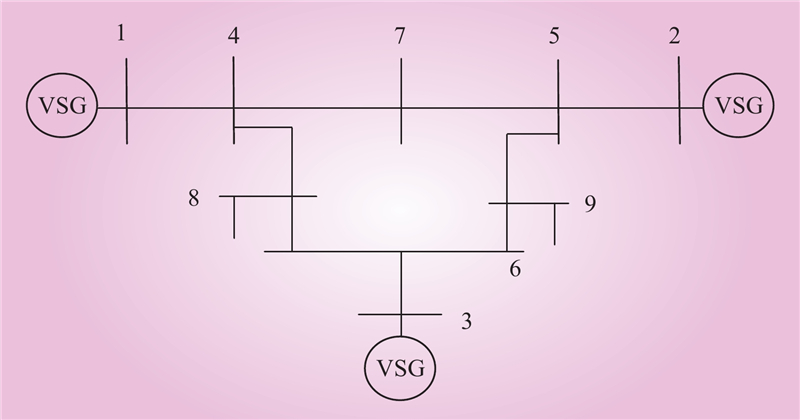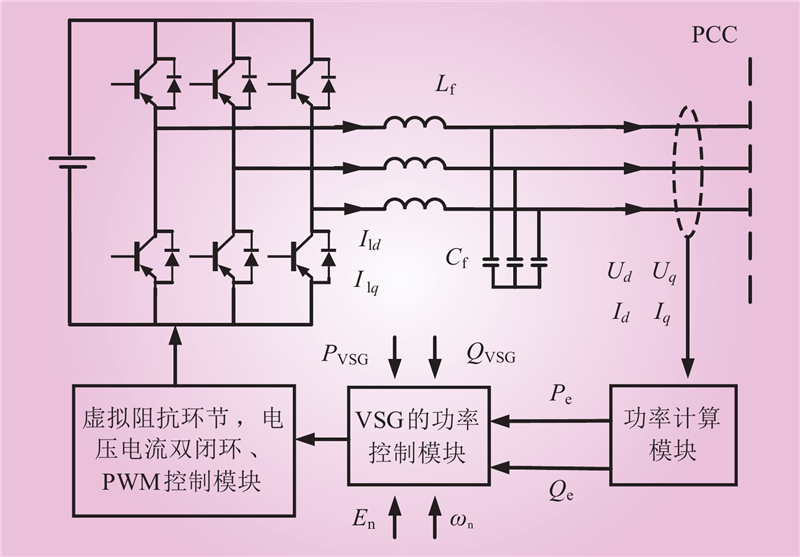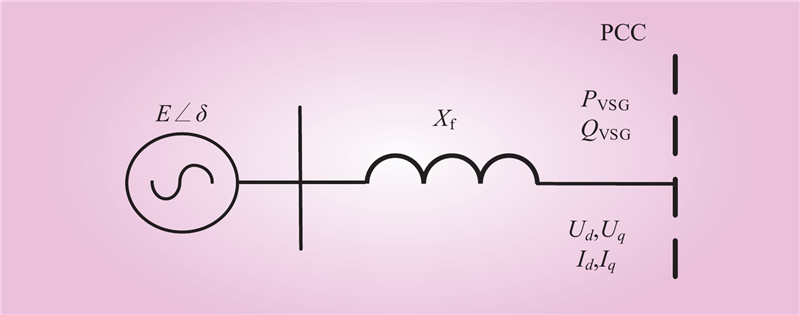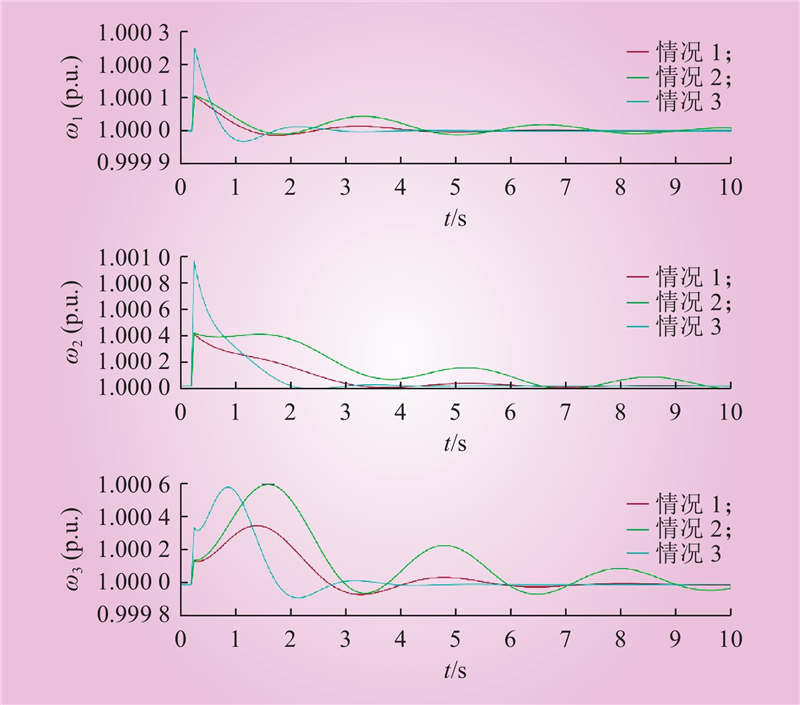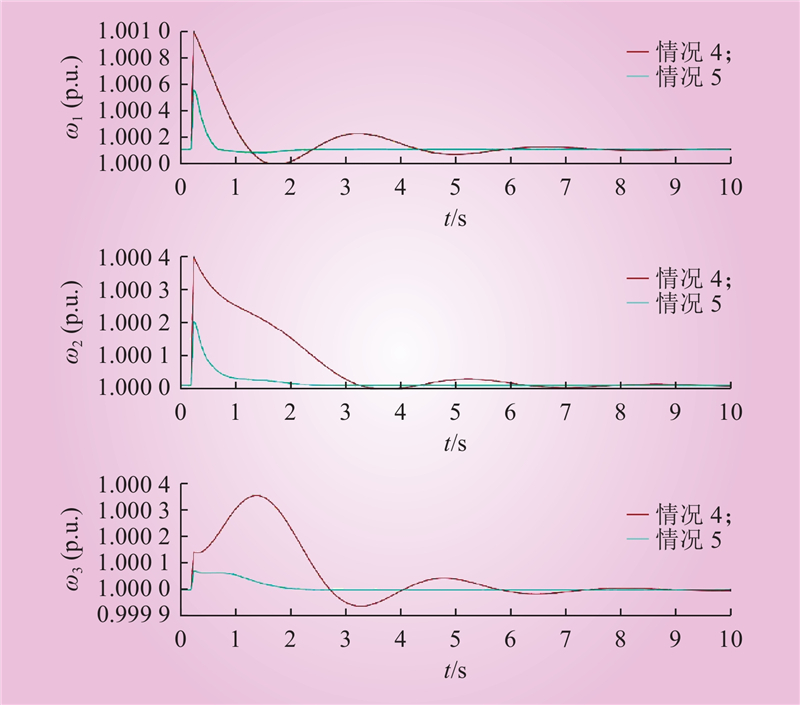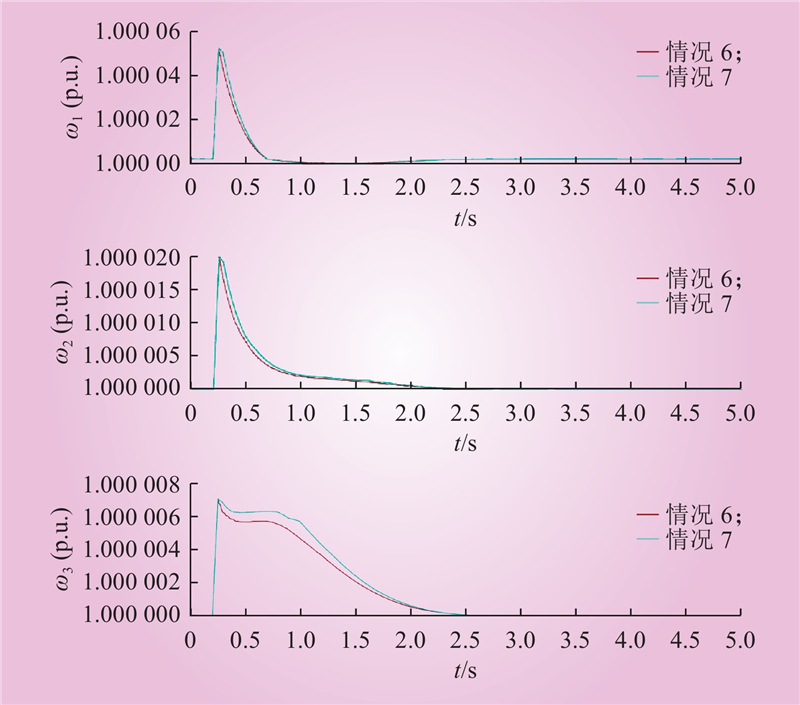| 1 |
MARKOVIC U, STANOJEV O, ARISTIDOU P, et al. Understanding small-signal stability of low-inertia systems[J]. IEEE Transactions on Power Systems, 2021, 36 (5): 3997- 4017.
DOI
|
| 2 |
李振垚, 甘德强, 栾某德, 等. 基于全状态模型的自同步电压源并网系统频率稳定分析[J]. 中国电力, 2023, 56 (5): 182- 192.
|
|
LI Zhenyao, GAN Deqiang, LUAN Moude, et al. Frequency stability analysis based on full state model in autonomous-synchronization voltage source interfaced power system[J]. Electric Power, 2023, 56 (5): 182- 192.
|
| 3 |
刘櫂芮, 贾祺, 严干贵, 等. 基于惯量响应的双馈风电机组动态协调机理研究[J]. 中国电力, 2022, 55 (7): 142- 151.
|
|
LIU Zhaorui, JIA Qi, YAN Gangui, et al. Dynamic coordination mechanism of DFIGs based on inertia response[J]. Electric Power, 2022, 55 (7): 142- 151.
|
| 4 |
郭小龙, 张江飞, 亢朋朋, 等. 含基于PI控制受端二次调频的特高压直流虚拟同步控制策略[J]. 中国电力, 2022, 55 (11): 66- 72.
|
|
GUO Xiaolong, ZHANG Jiangfei, KANG Pengpeng, et al. Virtual synchronization control strategy for UHVDC with secondary frequency modulation based on PI control[J]. Electric Power, 2022, 55 (11): 66- 72.
|
| 5 |
李建林, 丁子洋, 刘海涛, 等. 构网型储能变流器及控制策略研究[J]. 发电技术, 2022, 43 (5): 679- 686.
|
|
LI Jianlin, DING Ziyang, LIU Haitao, et al. Research on grid-forming energy storage converters and control strategies[J]. Power Generation Technology, 2022, 43 (5): 679- 686.
|
| 6 |
吕志鹏, 盛万兴, 钟庆昌, 等. 虚拟同步发电机及其在微电网中的应用[J]. 中国电机工程学报, 2014, 34 (16): 2591- 2603.
|
|
LÜ Zhipeng, SHENG Wanxing, ZHONG Qingchang, et al. Virtual synchronous generator and its applications in micro-grid[J]. Proceedings of the CSEE, 2014, 34 (16): 2591- 2603.
|
| 7 |
吴恒, 阮新波, 杨东升, 等. 虚拟同步发电机功率环的建模与参数设计[J]. 中国电机工程学报, 2015, 35 (24): 6508- 6518.
|
|
WU Heng, RUAN Xinbo, YANG Dongsheng, et al. Modeling of the power loop and parameter design of virtual synchronous generators[J]. Proceedings of the CSEE, 2015, 35 (24): 6508- 6518.
|
| 8 |
WANG F, ZHANG L J, FENG X Y, et al. An adaptive control strategy for virtual synchronous generator[J]. IEEE Transactions on Industry Applications, 2018, 54 (5): 5124- 5133.
DOI
|
| 9 |
LI J, WEN B Y, WANG H Y. Adaptive virtual inertia control strategy of VSG for micro-grid based on improved Bang-Bang control strategy[J]. IEEE Access, 2019, 7, 39509- 39514.
DOI
|
| 10 |
李鹏, 王奔, 赵思臣. 微网虚拟同步发电机下的自适应滑模控制策略[J]. 电气自动化, 2017, 39 (3): 86- 89.
DOI
|
|
LI Peng, WANG Ben, ZHAO Sichen. An adaptive sliding mode control strategy for the virtual synchronous generator of the micro-grid[J]. Electrical Automation, 2017, 39 (3): 86- 89.
DOI
|
| 11 |
YAO F J, ZHAO J B, LI X J, et al. RBF neural network based virtual synchronous generator control with improved frequency stability[J]. IEEE Transactions on Industrial Informatics, 2021, 17 (6): 4014- 4024.
DOI
|
| 12 |
张波, 颜湘武, 黄毅斌, 等. 虚拟同步机多机并联稳定控制及其惯量匹配方法[J]. 电工技术学报, 2017, 32 (10): 42- 52.
|
|
ZHANG Bo, YAN Xiangwu, HUANG Yibin, et al. Stability control and inertia matching method of multi-parallel virtual synchronous generators[J]. Transactions of China Electrotechnical Society, 2017, 32 (10): 42- 52.
|
| 13 |
宋琼, 张辉, 孙凯, 等. 多微源独立微网中虚拟同步发电机的改进型转动惯量自适应控制[J]. 中国电机工程学报, 2017, 37 (2): 412- 424.
|
|
SONG Qiong, ZHANG Hui, SUN Kai, et al. Improved adaptive control of inertia for virtual synchronous generators in islanding micro-grid with multiple distributed generation units[J]. Proceedings of the CSEE, 2017, 37 (2): 412- 424.
|
| 14 |
任碧莹, 邱姣姣, 刘欢, 等. 基于虚拟同步发电机双机并联系统的参数自调节优化控制策略[J]. 电工技术学报, 2019, 34 (1): 128- 138.
|
|
REN Biying, QIU Jiaojiao, LIU Huan, et al. Optimization control strategy of self-adjusting parameter based on dual-parallel virtual synchronous generators[J]. Transactions of China Electrotechnical Society, 2019, 34 (1): 128- 138.
|
| 15 |
ALIPOOR J, MIURA Y, ISE T. Stability assessment and optimization methods for microgrid with multiple VSG units[J]. IEEE Transactions on Smart Grid, 2018, 9 (2): 1462- 1471.
DOI
|
| 16 |
CHEN S M, SUN Y, HAN H, et al. Active power oscillation suppression and dynamic performance improvement for multi-VSG grids based on consensus control via COI frequency[J]. International Journal of Electrical Power & Energy Systems, 2023, 147.
|
| 17 |
CHEN S M, SUN Y, HAN H, et al. Dynamic frequency performance analysis and improvement for parallel VSG systems considering virtual inertia and damping coefficient[J]. IEEE Journal of Emerging and Selected Topics in Power Electronics, 2023, 11 (1): 478- 489.
DOI
|
| 18 |
POURNAZARIAN B, SANGRODY R, LEHTONEN M, et al. Simultaneous optimization of virtual synchronous generators parameters and virtual impedances in islanded microgrids[J]. IEEE Transactions on Smart Grid, 2022, 13 (6): 4202- 4217.
DOI
|
| 19 |
YANG Z Q, ZHAN M, LIU D, et al. Small-signal synchronous stability of a new-generation power system with 100% renewable energy[J]. IEEE Transactions on Power Systems, 2023, 38 (5): 4269- 4280.
DOI
|
| 20 |
杜燕, 朱轲, 杨向真, 等. 考虑频率耦合的VSG虚拟阻抗优化设计[J]. 高电压技术, 2022, 48 (12): 5057- 5067.
|
|
DU Yan, ZHU Ke YANG Xiangzhen, et al. Optimal design of virtual synchronous generator virtual impedance considering frequency coupling[J]. High Voltage Engineering, 2022, 48 (12): 5057- 5067.
|
| 21 |
GE P J, TU C M, XIAO F, et al. Design-oriented analysis and transient stability enhancement control for a virtual synchronous generator[J]. IEEE Transactions on Industrial Electronics, 2023, 70 (3): 2675- 2684.
DOI
|
| 22 |
HU Y W, SHAO Y T, YANG R C, et al. A configurable virtual impedance method for grid-connected virtual synchronous generator to improve the quality of output current[J]. IEEE Journal of Emerging and Selected Topics in Power Electronics, 2020, 8 (3): 2404- 2419.
DOI
|
| 23 |
杨苓, 黄泽杭, 陈璟华, 等. 基于纵横交叉算法的直流微电网趋优稳定性分析[J]. 高电压技术, 2023, 49 (11): 4632- 4641.
|
|
YANG Ling, HUANG Zehang, CHEN Jinghua, et al. Optimal stability analysis of DC microgrid based on crisscross optimization algorithm[J]. High Voltage Engineering, 2023, 49 (11): 4632- 4641.
|
| 24 |
殷豪, 丁伟锋, 陈顺, 等. 基于长短时记忆网络-纵横交叉算法的含高比例新能源电力市场日前电价预测[J]. 电网技术, 2022, 46 (2): 472- 480.
|
|
YIN Hao, DING Weifeng, CHEN Shun, et al. Day-ahead electricity price forecasting of electricity market with high proportion of new energy based on LSTM-CSO model[J]. Power System Technology, 2022, 46 (2): 472- 480.
|


